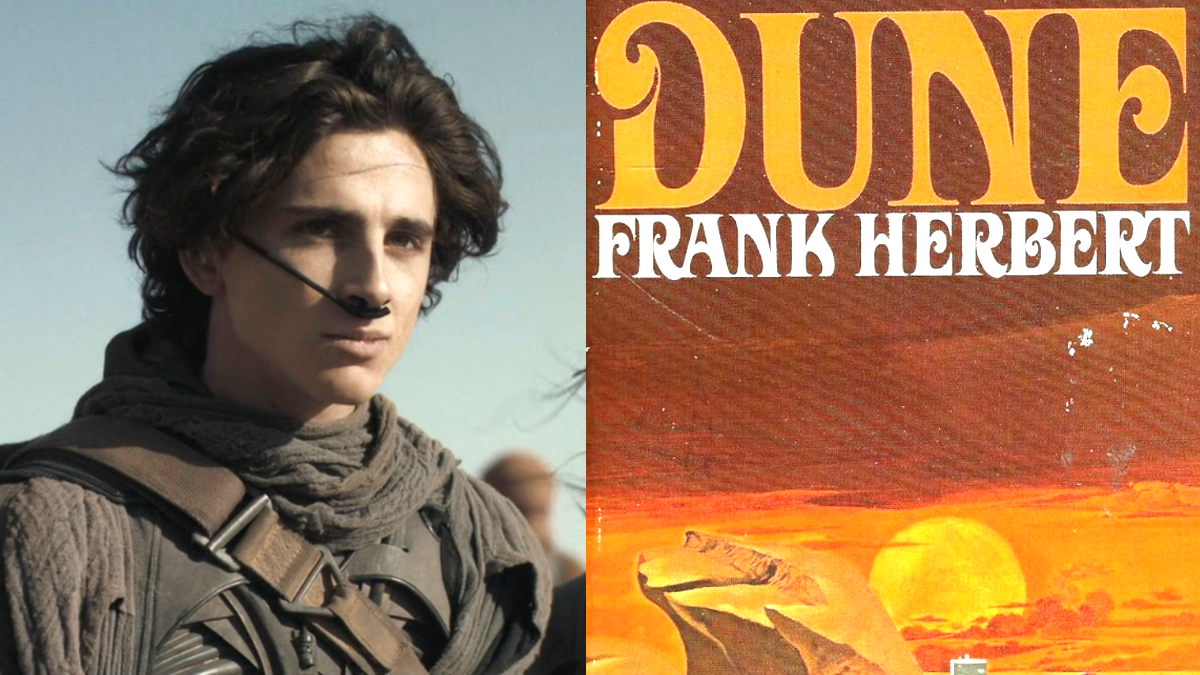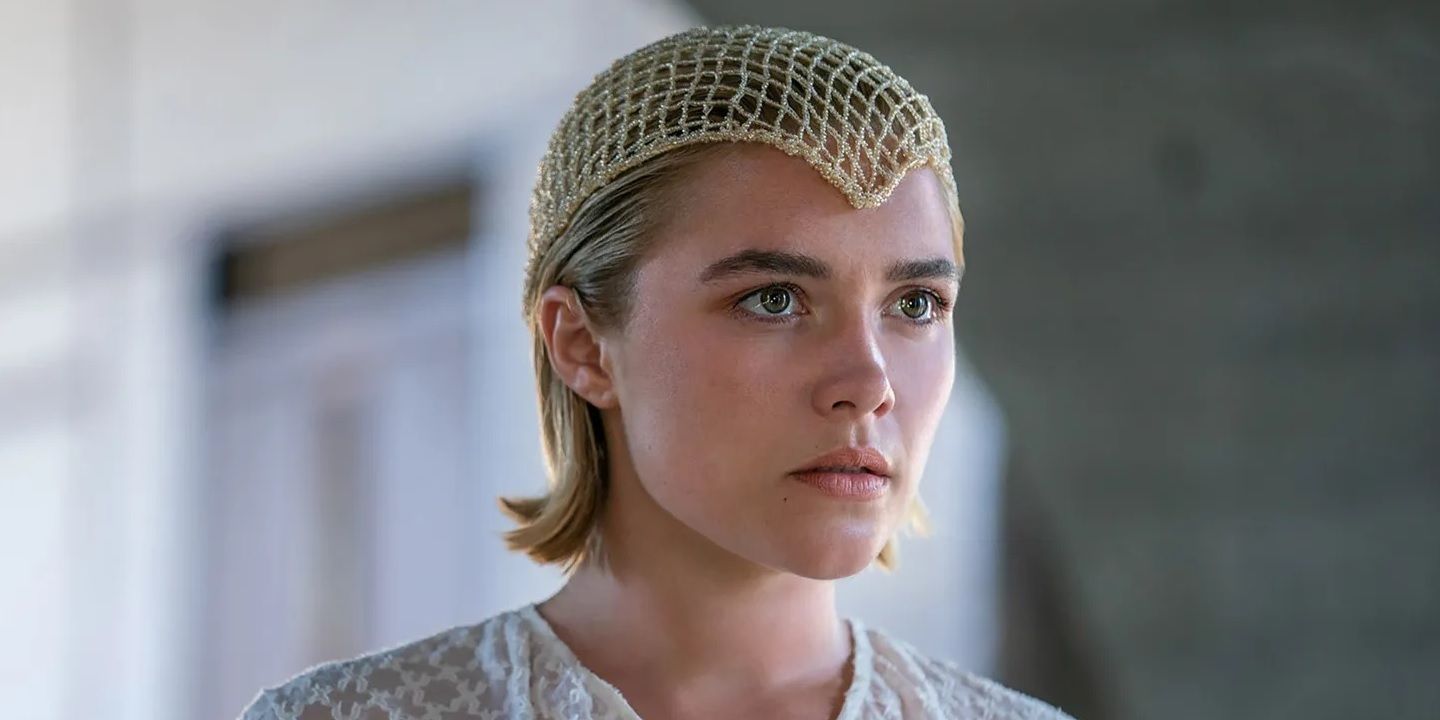
Advertisement
Denis Villeneuve’s adaptation of Frank Herbert’s seminal 1965 novel, “Dune,” has been hailed as a groundbreaking achievement, defying the skepticism of many who deemed the source material unadaptable.
The director’s initial foray into the Dune universe premiered in 2021, remaining faithful to Herbert’s narrative while infusing it with his own creative vision. Set against the backdrop of House Atreides’ assumption of stewardship over the desert planet Arrakis, the story unravels a complex web of intrigue and treachery as the Atreides face a sinister plot aimed at their destruction. At the heart of the tale lies young Paul Atreides, portrayed with depth and nuance by Timotheé Chalamet, who discovers his pivotal role in a centuries-old breeding program intended to produce a messianic figure known as the Kwisatz Haderach.
However, Villeneuve’s adaptation only scratches the surface of Herbert’s expansive narrative, encompassing merely the first half of the novel. The film culminates with Paul and his mother, Jessica, played with grace by Rebecca Ferguson, finding refuge among the enigmatic Fremen people of Arrakis.
As “Dune: Part Two” picks up the narrative thread left dangling by its predecessor, it embarks on a journey that diverges from the source material in unexpected ways. While remaining true to the essence of Herbert’s work, Villeneuve’s creative choices breathe new life into the story, enriching the cinematic experience while deviating from the established canon.
One significant departure lies in Villeneuve’s exploration of the Fremen culture and their journey to Sietch Tabr, which unfolds with a sense of immediacy and depth that transcends the confines of the novel. These creative liberties allow for a deeper immersion into the intricacies of Arrakis and its inhabitants, forging a stronger connection between the audience and the world of Dune.
Despite these deviations, Villeneuve’s reverence for Herbert’s masterpiece shines through, ensuring that the spirit of “Dune” remains intact even as the narrative takes unexpected turns. The director’s bold approach not only honors the legacy of the original novel but also elevates the cinematic adaptation to new heights, cementing “Dune: Part Two” as a worthy addition to the pantheon of science fiction epics.
1. Jamis

In Frank Herbert’s “Dune” novel, the character of Jamis, portrayed by Babs Olusanmokun in Denis Villeneuve’s adaptation, plays a pivotal yet fleeting role. While his time in the narrative is brief, his death resonates deeply and influences the trajectory of the story. Villeneuve, in “Dune: Part Two,” approaches this aspect differently, but the essence of Jamis’s significance remains intact.
In the book, Paul Atreides, adhering to Fremen customs, engages in a ritualistic combat with Jamis, ultimately resulting in the latter’s demise. Following Jamis’s death, Paul inherits his possessions, including his wife, Harah, though Paul does not accept her as a spouse. Despite this, Harah becomes a part of Paul’s household, reflecting the complexities of Fremen culture and their traditions.
Interestingly, this aspect of the narrative is absent in Villeneuve’s film adaptation. However, Jamis’s memory continues to reverberate throughout both films. Paul experiences visions of Jamis, initially perceiving him as a potential ally who will guide him in navigating the desert. Although Paul anticipates learning from Jamis in a conventional sense, their interactions take a different turn.
During their encounter, Jamis imparts the Amtal Rule to Paul, a trial by combat that serves as a profound learning experience for the young protagonist. Through this duel and the subsequent funeral rites, Paul gains insights into the ways of the desert and the intricacies of Fremen culture. Even after Jamis’s passing, he remains a spiritual guide for Paul, with the protagonist continuing to receive visions of the warrior.
In essence, while the specifics of Jamis’s role may differ between the novel and the film, his significance as a mentor figure and catalyst for Paul’s growth and understanding remains consistent. Through his teachings, both in life and in death, Jamis continues to shape Paul’s journey, serving as a guiding presence as the young protagonist navigates the challenges of Arrakis and embraces his destiny.
2. Princess Irulan

In both Frank Herbert’s “Dune” novel and Denis Villeneuve’s film adaptation, Princess Irulan emerges as a subtle yet influential figure whose presence permeates the narrative, despite her initially peripheral role.
In the book, Princess Irulan serves as a narrative device, with sections of the story delineated by her commentary and excerpts from historical texts. These excerpts provide valuable insights into Paul Atreides’ rise to power and the broader political landscape of the Dune universe. While Irulan remains largely unseen for much of the novel, she becomes a significant figure towards the end when Paul, facing political pressures, chooses her as his bride to solidify his claim to the throne.
Similarly, in Villeneuve’s film, portrayed by Florence Pugh, Princess Irulan is afforded slightly more screen time, allowing for a deeper exploration of her character and motivations. While still maintaining her historical significance and narrative framing device, Irulan takes a more active role in shaping her own destiny. Realizing the precariousness of her situation following the downfall of her father’s House on Arrakis, she strategically aligns herself with Paul, recognizing him as the key to her survival. Her decision to marry Paul is not merely a passive acceptance of fate but a calculated move to secure her own future amidst the chaos of political upheaval.
Looking ahead, should further adaptations of Herbert’s Dune series come to fruition, such as “Dune Messiah,” Princess Irulan’s role is poised to expand even further. With her keen political acumen and intimate knowledge of the intricacies of power dynamics, Irulan is positioned to play a more central and active role in the unfolding saga, potentially becoming a key player in the complex web of political intrigue and power struggles that define the Dune universe.
In both the novel and the film, Princess Irulan remains a figure of quiet influence, her subtle machinations and strategic maneuvers leaving an indelible mark on the events of the series. As the story progresses, her role is likely to evolve, presenting new opportunities for her to assert her agency and shape the fate of the Dune universe.
3. Lady Jessica

In both Frank Herbert’s “Dune” novel and Denis Villeneuve’s film adaptation, the character of Jessica emerges as a multifaceted and influential figure, wielding considerable power and agency in shaping the destiny of her son, Paul Atreides.
In the film, Jessica’s significance is elevated as she takes on a more active and central role in the unfolding narrative. After being accepted by the Fremen, she undergoes the spice agony to ascend to the revered status of Reverend Mother, a transformation that underscores her formidable strength and resilience. By ingesting the Water of Life, Jessica gains access to the collective memories of all the Reverend Mothers before her, imbuing her with profound wisdom and insight.
Far from fading into the background, Jessica seizes her newfound authority to advocate for Paul’s role as the Kwisatz Haderach, the prophesied messianic figure. She strategically maneuvers the fundamentalist factions among the Fremen to view Paul as the Lisan al Gaib, the “Voice from the Outer World,” thereby consolidating support for his ascent to leadership. Through her unwavering belief in Paul’s destiny and her adept manipulation of political forces, Jessica exerts a profound influence on the trajectory of events, ultimately guiding Paul towards embracing his formidable purpose.
By catalyzing Paul’s acceptance of the Water of Life and his embrace of his prophesied role, Jessica emerges as the master architect of her son’s destiny, embodying the complex interplay of motherhood, leadership, and mysticism. Her portrayal in the film accentuates her agency and power, illuminating the pivotal role she plays in shaping the fate of the Dune universe.
4. Baron Harkonnen’s Death

Indeed, altering Alia’s trajectory in Denis Villeneuve’s “Dune: Part Two” inevitably shifts the fate of Baron Harkonnen, played by Stellan Skarsgård, albeit subtly. While in the books, Alia plays a significant role in the demise of the Baron, Villeneuve’s adaptation takes a different route to achieve the same end, albeit with a nuanced twist.
In the original narrative, Alia allows herself to be captured by the Emperor to execute the final plans of the Lisan al Gaib. Aware of her lineage and the connection to the Baron as her maternal grandfather, she cunningly assassinates him using the Gom Jabbar, a dramatic and intriguing turn of events. However, translating this complex sequence into live-action could pose challenges.
In “Dune: Part Two,” Villeneuve opts for a different approach, with Paul Atreides taking center stage in the Baron’s demise. After overtaking the Emperor’s ship with his formidable Fremen warriors, Paul confronts the Baron, finally exacting vengeance for his father’s death. While this deviation from the source material may diverge from the intricacies of Herbert’s narrative, it serves to underscore Paul’s character arc and provides a poignant resolution to Duke Leto’s untimely demise.
By intertwining Paul’s quest for justice with the avenging of his father’s death, Villeneuve adds a layer of emotional depth and catharsis to the narrative, culminating in a satisfying conclusion for both Paul and the audience. While Alia’s role in the Baron’s downfall may be minimized in this adaptation, the essence of her character and her impact on the story remain palpable, ensuring that the intricate web of relationships and motivations within the Dune universe remains compelling and resonant.
5. The Harkonnen Spy
As is often the case with adaptations, certain subplots are streamlined or omitted to prioritize the main narrative arc. In Denis Villeneuve’s “Dune: Part Two,” one such subplot that falls by the wayside is the suspicions surrounding Lady Jessica’s allegiance to the Bene Gesserit and her potential involvement in Duke Leto’s death.
In Frank Herbert’s novel, Jessica’s connections to the secretive Bene Gesserit order raise eyebrows among certain characters, who harbor suspicions about her true loyalties, particularly in the aftermath of Duke Leto’s untimely demise. Multiple individuals entertain doubts about Jessica’s emotional attachment to Leto, speculating that she may have been strategically positioned to facilitate his assassination.
However, the true identity of the traitor is ultimately revealed to be Dr. Yueh, a revelation that underscores the complexity of allegiances and motivations within the Dune universe. Yet, in “Dune: Part Two,” this subplot is notably absent, as the film opts to focus on other, more significant story beats.
By excising this minor plot thread, Villeneuve streamlines the narrative, allowing for a tighter focus on key plot points and character developments. While the suspicions surrounding Lady Jessica may add layers of intrigue and complexity in the novel, their omission in the film adaptation does not detract from the overarching themes and conflicts at the heart of the story.
Instead, Villeneuve prioritizes the exploration of Paul Atreides’ journey, the dynamics of power and politics on Arrakis, and the epic confrontations that shape the fate of entire worlds. In doing so, “Dune: Part Two” remains a faithful and compelling adaptation that captures the essence of Herbert’s richly layered universe while offering a fresh and cinematic interpretation for audiences to immerse themselves in.
